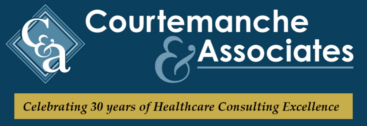In March, ECRI published their annual report of the Top 10 Patient Safety Concerns. This year, ECRI allowed members from the ECRI and ISMP member organizations to nominate various topics that they believed created risks to patient safety. The list contained many of the topics that healthcare workers have become accustomed to seeing on the annual list. There were 2 new additions this year that caught our attention as they confirmed for our consulting team two significant findings we are seeing when conducting mock surveys across the country.
Challenges Transitioning Newly Trained Clinicians from Education to Practice
Cited as #1 on the ECRI list, we absolutely concur with this finding and its placement on the list. Transitioning newly trained clinicians into practice rose quickly as an area of concern as health care organizations began their recovery from the pandemic. It was only after the dust began to settle that the evidence of the broken onboarding system used during the pandemic came to light. Statistics from 2023 indicate that 96% of new nurses secured employment in 2022 compared to 53% of new workers in other fields. This statistic should not surprise us as we also know industry-wide that we lost a huge percentage of our seasoned, veteran workforce as a result of the pandemic.
Being armed with this information, it is essential that we begin a new type of recovery in order to prevent a second wave of staff shortages triggered by a fear of causing harm due to poor preparation for practice.
Healthcare organization leaders must create a renewed focus on re-establishing processes that were in place prior to the pandemic for onboarding new employees. In fact, we encourage organizations to identify those staff who joined their workforce during the pandemic to revisit the onboarding process with those staff to ensure the following:
- Essential care processes have been taught and are being practiced as defined within the organization's pre-pandemic policies and procedures.
- Staff have access to the information they need to be successful.
- Staff feel comfortable questioning care processes and seeking help when they feel uncomfortable or unprepared to practice a specific skill.
- Staffing levels are maintained at a sufficient level to create an atmosphere conducive of providing safe patient care.
Remember, that during the pandemic, modifications and/or shortcuts were developed in order to continue to provide care without creating greater risks or new risks of harm from virus exposures and to place new staff at the bedside as quickly as possible. These processes need to be evaluated to ensure they are once again compliant with manufacturer instructions for use and regulatory expectations as this combination leads to the highest degree of process-related safety.
Additionally, organizations need to ensure that staff have access to the information they need to be successful and feel safe practicing within their organization. Communication processes to keep staff alert regarding how to secure assistance when faced with a care process that they are uncomfortable performing is essential to continue to elevate the position of patient safety within each organization. This marries nicely with the principle of High Reliability when we become consumed with the potential for failure. We have seen organizations use the phrase "phone a friend", made popular by a television game show a few years ago as campaign slogans to promote the acceptance of questioning one's knowledge and skills.
Unintended Consequences of Technology Adoption
The second area that we often see during survey is the unintended consequences of technology adoption. Understanding the visible and invisible operations of technology is essential, particularly when we give thought to computerization of our medical record documentation. Organizations need to understand the inner workings of technology, including its built -in safety features and deliberately challenge the technology. For instance, can technology be made smart enough to quickly identify that the physician note for the wrong patient was copied and pasted from one record to a different one? Can it be made smart enough to trigger meaningful alerts when data being collected sends warning signals? Can it advise a secondary party when the alarms have been silenced or even worse, not responded to? Technology is fabulous, but we still need to be consumed with its potential for failure.
We are certain you are tired of hearing us talk about assessing risk, but this process is one of the most useful tools available to the industry. It creates a platform where technology and clinical skills intersect and where human behavior becomes a major focus. Continuously challenging processes with the famous "What if" question can save lives and perhaps reduce staff fear that leads to burnout. The ECRI report shares the statistic that physicians practicing in ambulatory care settings spend 5 of every 8 hours documenting in the Electronic Health Record. ECRI also cautions its readers about the emerging technology of artificial intelligence (AI) and recognizes that the success of AI systems is dependent on the source of intelligence used to train the AI application. We must remain cognizant of the need for a balance of technology and human skills.
When conducting your technology associated risk assessments, consider using a fishbone diagram to map out all of the various aspects that need to be considered. The most common fishbone diagram uses the categories of People, Environment, Method and Machines to prompt the identification of all components to a process. This same approach will help to yield a robust risk assessment.
It can be overwhelming when you think of how much improvement work there is to get done, but healthcare is not a static environment. Advances continue to be made, survival rates continue to improve and risk to patient safety will continue to be identified for us to work on mitigating.
References:
ECRI Top 10 Patient Safety Concerns Blog 2024/ March
For questions or to learn more contact the C&A team at 704-573-4535 or email us at info@courtemanche-assocs.com.

